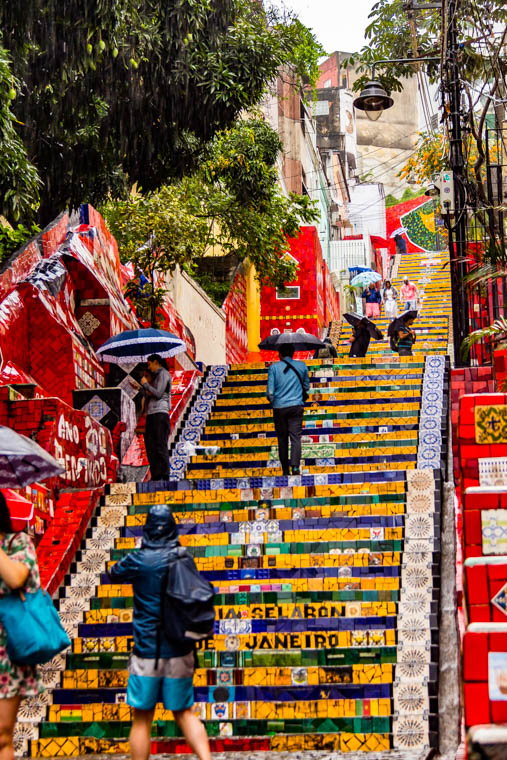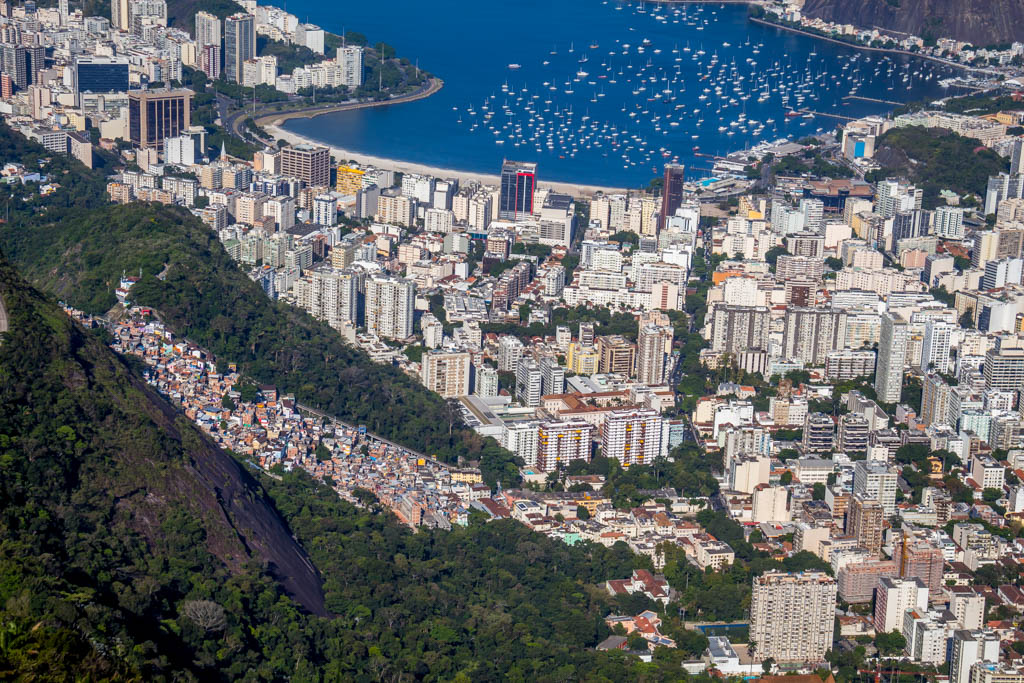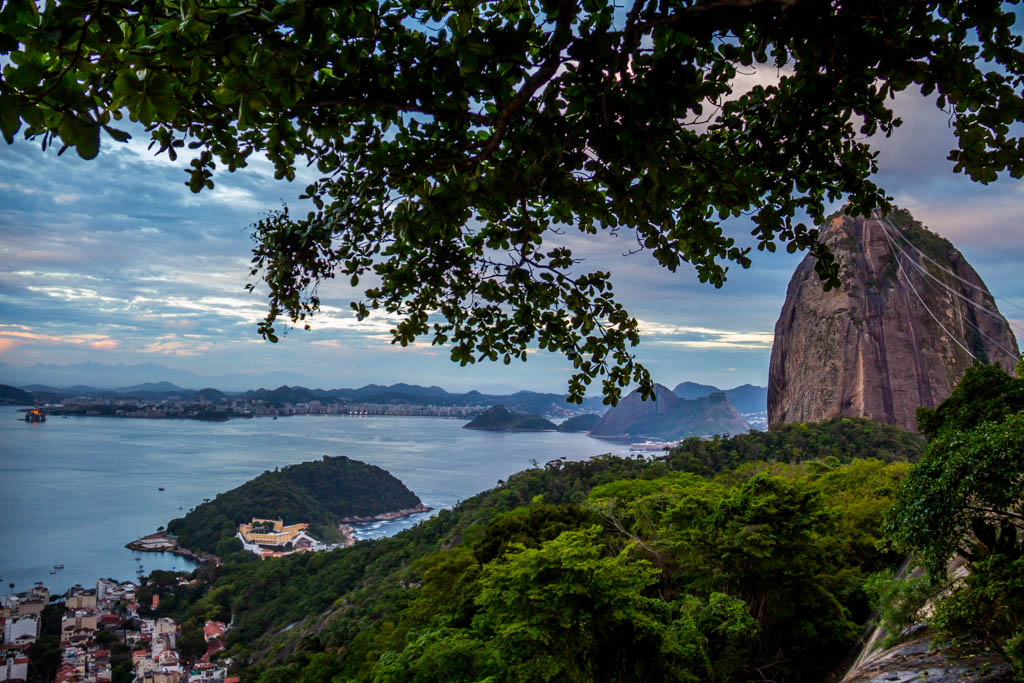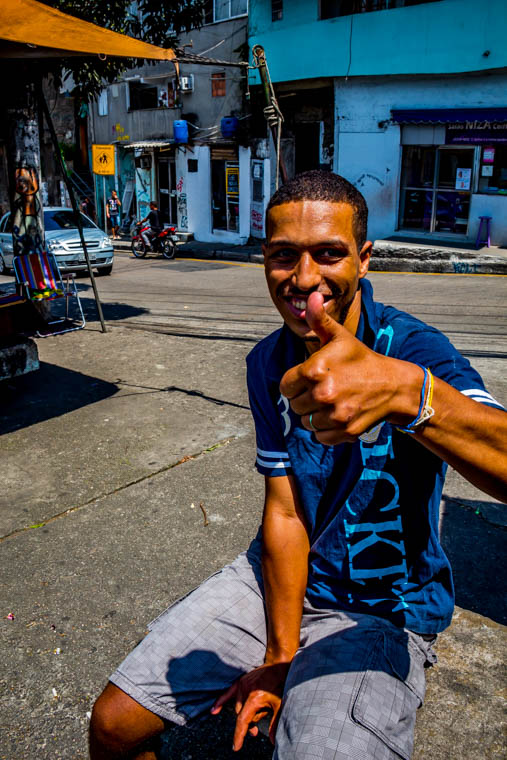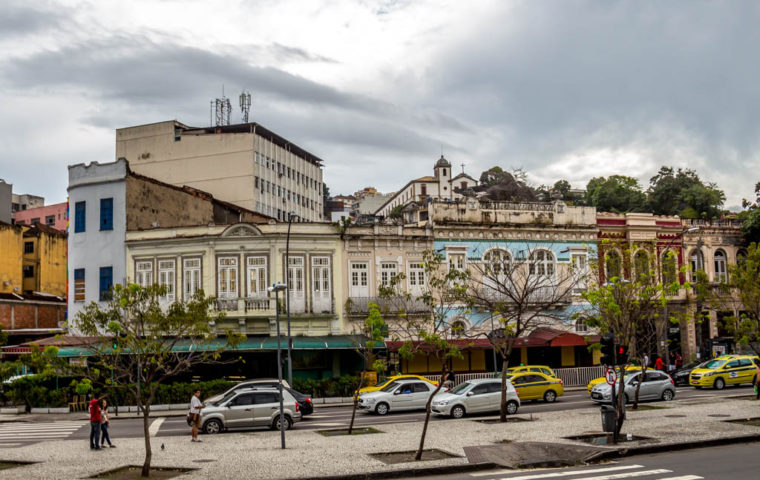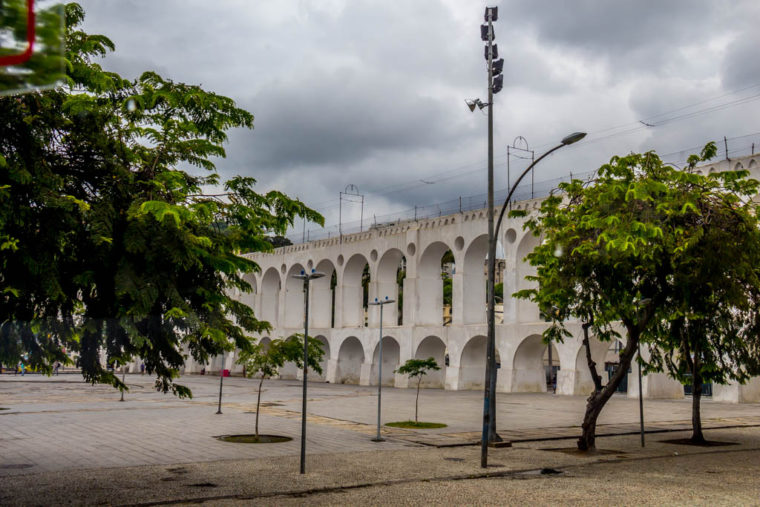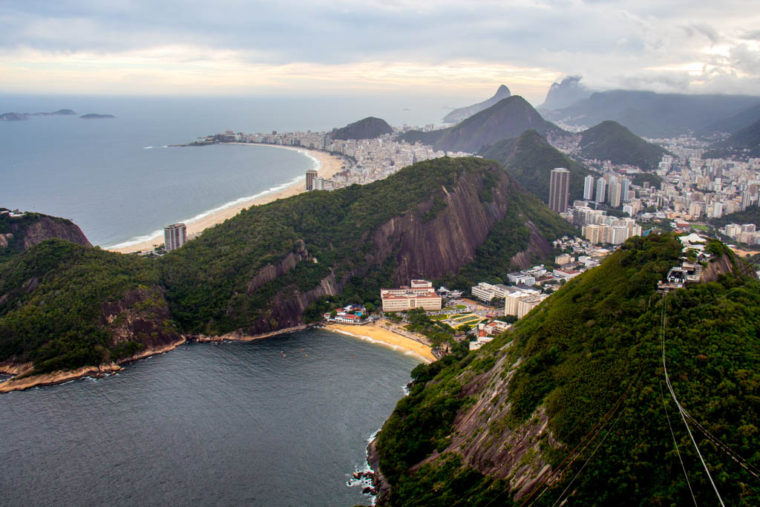Rio de Janeiro
Rio was, as I heard many times during the Olympics, really worth a visit, and I’m very happy I chose to start my trip here. The only thing that was not perfect, was the weather. Out of seven days it rained all day for two days, and it is at least one day too much. It was not just drizzle, but really wet and gray days, so there were some attractions i did not see as much as I would have liked to,
The views and contrasts of Rio has always fascinated me, but having been there; it is the people that have made the biggest impression. It is simply amazing how despite many challenges, they always look and behave as they are happy and keep smiling all the time. Wherever I went, they were always extremely helpful and seems to have a lot of extra energy for other people. Their smile is like dope – highly addictive.
In addition to having the world’s best beaches, Rio is also surrounded by lots a green areas. The town borders to the huge Tijuca National Park, where a few steps from the busy roads, you are in the forest with dense vegetation. My bicycle trip from Copacabana to Downtown went almost all the way through a huge park on one side and various beaches on the other side.
Especially on Sundays – and I had two in the week I was there, as Tuesday was Halloween Bank Holiday – the parks and beaches were filled with people, and there was a lot of activity everywhere. The road along Ipanema and Copacabana beaches are on Sundays and Public Holidays partially closed to traffic, so there is more room for bicycles and various activities. At the restaurants along Copacabana there were many places with live music – Samba and Bossanova. On these days there were also several different marketplaces in the city, and they all seemed to be well attended.
It is certainly a vibrant city where people live much of their lives outdoors. My local guide told me that Brazilians are not at all interested in interior. It think that makes sense when life is lived outdoors most of the time.
Rio’s Beaches and Parks
We all know Ipanema and Copacabana beaches, but Rio has a lot more – Leblon, Gloria, Flamengo and Botafogo. The latter is often empty of people and if used people will only be playing on the beach no-one goes into the water. The beaches are located in bays next to Sugar Loaf Mountain and the water is unfortunately so polluted that bathing is not possible. Leblon and Ipanema is where you find the most expensive hotels and residences, but I was very pleased to have chosen Copacabana, as the promenade with all the restaurant was far cozier than the much more empty promenades at Ipanema. These beaches are out the sea shore so it ok to take a swim here. Behind the Copacabana beach promenade, there are parallel streets with lots of shops, in case you need something.
The large park along the Gloria and Flamingo beaches in the on Guanabara Bay are 6 km long and created on filled up land. The person that came up with that idea 40 – 50 years ago must have been very clever as it is a huge benefit for the city today. Security guards in green vests are patrolling the park and looking after the guests.
If i was going to live in Rio, I think I would choose Botafogo. It is very central situated for almost everything. The district is close to Downtown, Copacabana and the park and beaches in between and there is also a very short distance to the Tijucu National Park. Moreover, they can admire the view of Sugar Loaf Mountain and Christ the Redeemer on a daily basis. They may not see quite as many tourists as you do at the beaches either. Even as a tourist you can get tired of looking at other half naked tourist in all sizes all the time
Favelas
You can’t talk about Ro without mentioning the Favelas, they are everywhere. It is my impression that no matter where you live, you are always next to a favela. Although I think, it is strange to visit a town to see the slums, I learned on a tour in one of Cape Town’s Townships, that what you see from the outside is not necessarily the right image. The visit to a favela in Rio with a local guide showed roughly the same and as they get part of the money the tourists are paying, they don’t mind the visitors.
Inside, there is an ordinary life for residents. In Rio, there’s just the extra challenge, as they live on rocky slopes. On the positive side it means they have great views in all directions, but it also means that there are many motorcycles on the roads, for sure the preferred way of transport. Our guide joked, that crossing the road was the biggest danger in the favela. It is probably not entirely true, there are still major problems in many of them with drugs, gang warfare and crime i general.
When Rio was awarded the Olympics in 2010, they started a clean up program to get favelas integrated into the rest of the city. They did start the cleanup process but after a short time, it stopped and then no one has heard more about the program. I visited the favela Rocinha, one of the largest and one of those which were tried redeveloped. It means that police are constantly at presence, but it does not mean that all is well. The police are human beings and they have to live so according to our guide, they are getting paid by drug dealers and gang leaders. The cleanup however, have been of great importance, and the Farvela was in a much better situation now than before the cleanup. Elsewhere it is different. On another trip, we drove past a favela with a great city view, but our driver did not allow us to get out of the van as there was an ongoing gang war. A little further on, we also saw a lot of police with heavily armed.
It is not recommended to visit a favela on your own and many taxi drivers refuse to go there. We were four guests and our guide on my trip, and although the guide was a local resident in the favela, he had trouble getting a taxi, where we could all be. We ended up squeezing 5 people into a normal taxi but with a driver who was OK with the trip because as he used to live there.
Once you are in the favela, you also need one with local knowledge to take you around, if you want to see a little more than the main street. We were taken through very narrow lanes, and as we started the tour from the top, we were walking down all the time. Around narrow corners down the uneven steps of various sizes. You would constantly have to be careful where you set your foot. We were sometimes able to look into an apartment or a room, and in many places they looked great, but it is a complicated place to live. It must be really challenging to get back and forth with shopping, children on these steps. In many favelas, the drains run freely under the houses, but I saw and smelled only one place where you were in no doubt about what we walked past, but this favela was one of the better in that area, we were told.
On the main streets there were all kinds of shops and I noticed many that sold paint. No wonder, I think it takes many layers of paint to cover and decorate these houses both inside and out. Walking a long the shops were just possible, The walking area was very narrow so we could only walk in one lane and had to watch not stepping down on the road as it was a very steep step, so here we would also have to be careful. There were many Take Aways and for two Reals, we could get a snack – for example an empanada with chicken and a cup of freshly squeezed juice. Both tasted fantastic, and 2 real is about 1/2 a dollar.
Like all other places in Rio, we met a lot of smiling and nice people. Although they were busy with whatever they were doing, such as carrying very heavy bags with building material down in an alley, they had time to stop, smile and be photographed. Quite unbelievable really.
After completing the tour the guide sent us back to the beaches where we came from by taxi
Tourist sites
Besides the beaches, it is a must to go up to get a close view of the Christ statue and not least, to get the view of the entire city from about 700 meters height. From Sugar Loaf Mountain in about 300 m height there is a great look of the city too and it is definitely recommended to go there as well. It is very nice to take a break both at the top and at the middle station.
Downtown has besides government buildings, museums, theaters also some old colonial houses. Many of them are not particularly well maintained and looks a bit like the slums just with a very different architecture than used in the favelas. Lapa district downtown is the area with the city’s nightlife, and it is also here that you find the Selaron stairs. A common staircase the artist Selaron covered with colorful tiles, because he wanted something beautiful to look at. The tiles was sent to him from around the world. Unfortunately he ended his life in a sad way, as he was found dead in front of the stairs. It is not known whether he died naturally, but rumors says, he was murdered. Some people did not like all the tourist visiting the area. Not good if you sell drugs but the theory has never been confirmed. Downtown is patrolled with guard in red vests and there are probably more colors in other parts og the city.
One area I would like to have seen more of, was Santa Teresa. We drove through it in the rain, but it looked really exciting with lots of art in the streets and lots of activity with restaurants and cafes. Unfortunately, it is also a location where it may be difficult to get a taxi to take you.
A major attraction of Rio, is that it is so close to the Tijuca National Park. You can get out into the wild very quickly, and the park is huge. To get up to the Christ statue you are going through a part of the park, and it is possible to walk up all the way up to the statue.
In carnival time, the parades are seen from the Samba Drome. It is an area with a permanent gallery. This is where the parades are dancing and performing in front of a lot of spectators and where they will be judged for performance and costumes before it’s all over. Outside carnival time you can bye costumes for next time or as a tourist just try a costume.
I saw the city from various trips by car, double decker bus, on bicycle and on foot. While the bike and the Farvela tours were on some really nice sunny days, the trip to Tijuca National Park was on one of the rainy days. That trip also included a visit to the Christ statue. When we got up there, I was really happy, I had already been there as we could see nothing of the city and only a glimpse the statue in the mist. Some of the other tourists on the tour was really jealous when they heard, I had been there earlier and saw some of my pictures.
When I visited Sugar Loaf Mountain, it was very cloudy. It meant nothing for my view of the city, but unfortunately I need good weather to get good pictures so for that, it was disappointing.
I did not see the olympic city. There were no official tours to that part of the city and I was recommended not to go there on my own.
Summary
I had some really nice days in Rio, and enjoyed my view of Copacabana Beach from my hotel. I did not experience or saw anything unpleasant. I should probably mention, that I did not go anywhere alone in the evenings, where I should not be. One afternoon I was in Botafogo and I wanted to take a picture of the square in front of the subway. There were among other things a couple of ladies there selling something. They looked strangely at me when I took out my camera. At first I thought it was because they did not want me to take a picture of them, but it was my camera, they thought I should get away as quickly as possible. I hurried to take a picture, not one of them though and then put it back in my bag. It was the only thing I experienced, so I don’t know if it was risky to show the camera. I think it is sad for the city that you have to behave like this and also that it has such a bad reputation where everyone think, there is something bad happening on every street corner. It was not my experience, and when the weather is good, it’s a fantastic vibrant city to visit with lots of music, dance, smiles and happy people.
.
Thank you to rio, to my sweet local guide and to all of you for reading the blog.
You can see more pictures here: Rio
This entry was posted in Brazil, Destinations, Rio De Janeiro, South America
